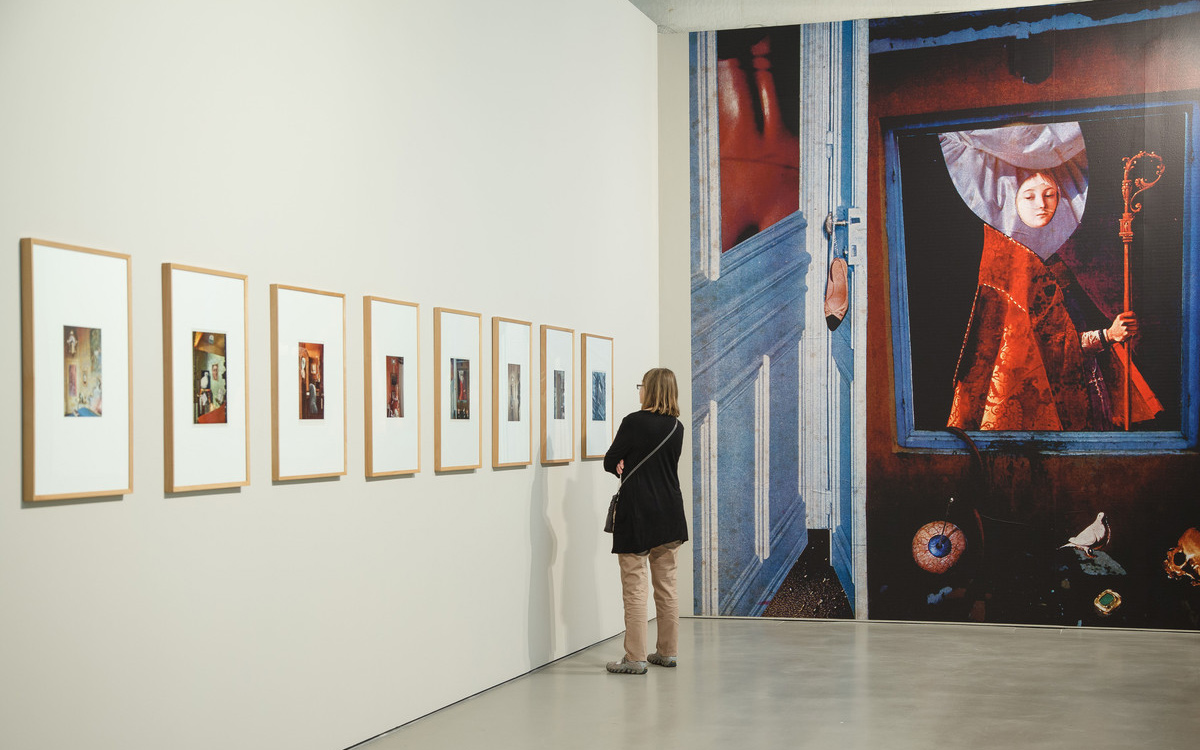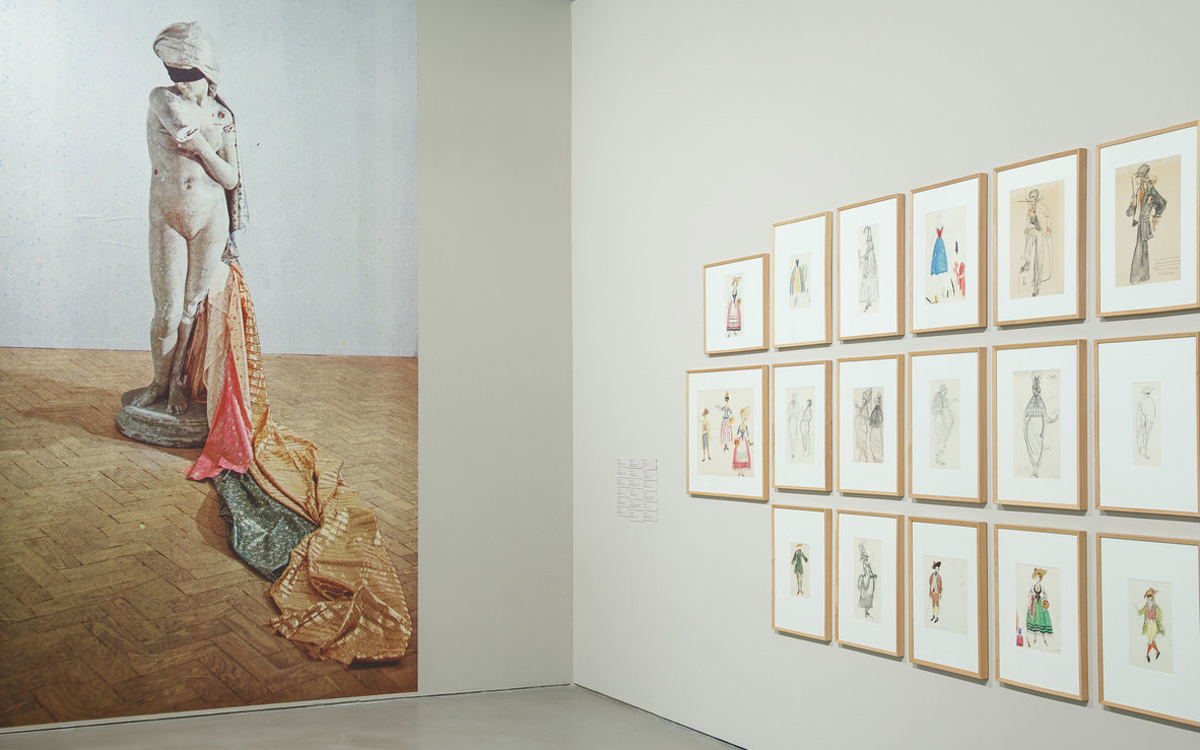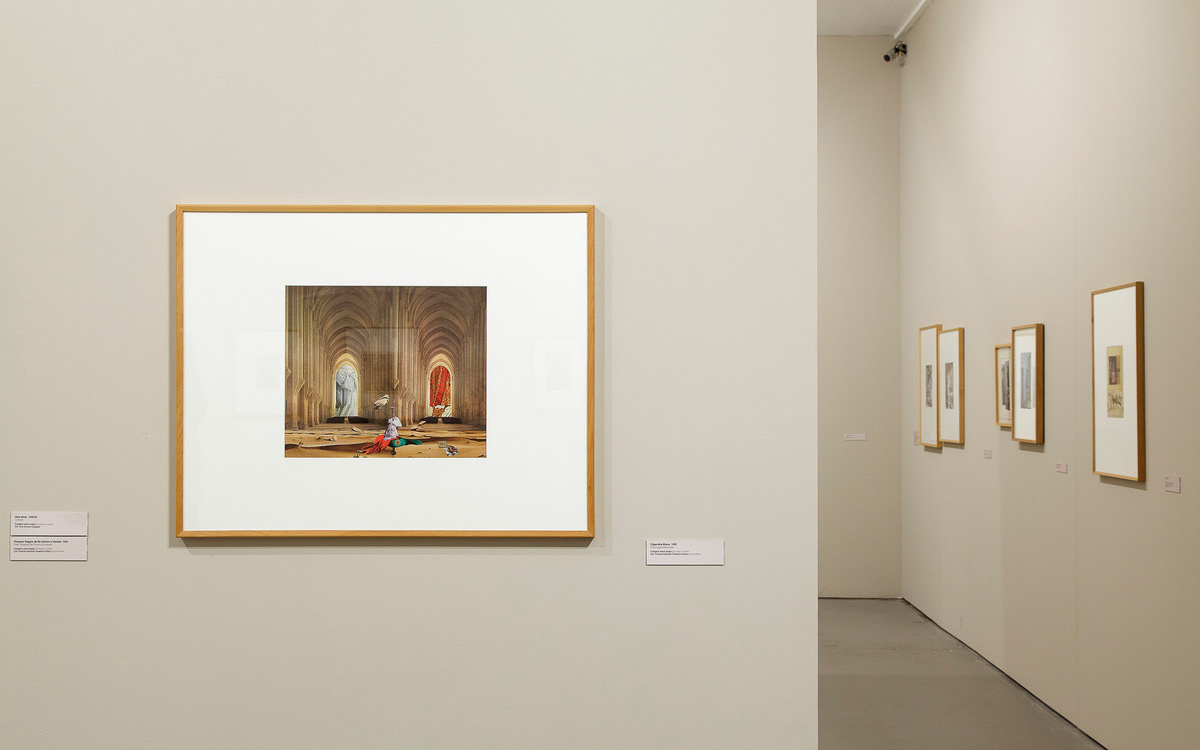The Unforeseen Reasons

In 2013, I organised the first retrospective dedicated to Fernando de Azevedo (1922–2002). From the vast body of work he produced over six decades, it included paintings, occultations, collages, drawings, a sculpture, silk-screen prints, illustrations, costumes, studies for stage sets and graphic work.
Occultations (printed or drawn pages partially concealed with ink), a process likely to have originated in the overpaintings of Max Ernst (c. 1918), made a unique mark on the history of surrealism. For Azevedo, and for other artists in Portugal during the 1940s, they mark the transition to non-figurative art and the adoption of happenstance and the unconscious. The process made way for the emergence of the unknown in each one, ‘because behind the exercise is the human being’ (Fernando Azevedo).

As with his collages, and many of his paintings, the occultations represent the negation of the figure-background principle. India ink is spread over printed images torn from the pages of magazines or, less frequently, over the artist’s own drawings, defining shapes in the areas not covered by ink, in compositions that assume the risk of irreversibility. What is hidden and guessed at might be the mirror image of what is shown and unveiled, but the image defined is inevitably a shape selected from the nigredo, or blackening, that is begun in the piece.

Azevedo’s occultations are at once dynamic, delicate, fluid and complex. The grotesque and the poetic, plant or vaguely animal motifs, geometric force and organic and mechanical nature coexist within them. The kinetic quality of the composition gives the impression of constant imminence, of revelation and concealment, of epiphany. The light that they project through a fleeting or contrasting chiaroscuro and the treatment of their sculptural volume give the forms a disconcerting, malleable and vulnerable plasticity, as well as a ghostly aspect to the sharp, bulging, stringy, spongy, ridged, polished and nuanced figures.

For the artist, an understanding of the work was ‘sensitive in nature,’ given that ‘no one understands without first being moved.’ In 1951 he wrote: ‘today’s painter knows that the external reality and the internal reality have two profiles given by the same common line.’ The reasons of the unconscious are unforeseen but real – they erupt in the urgency of expression with all the strangeness and force that freedom grants them. Surrealism raised that flag and announced the quest for the totality and authenticity of the being, through those unconscious reasons. Azevedo employed enthusiasm and artistic creativity in civic action and in fulfilling this programme, which sought to be free from aesthetic, referential or political limitations. My huge admiration for him increased immensely on this evidence, into which the preparation of this exhibition gave me greater insight.
Leonor Nazaré
Curator of the CAM
Curators’ Choices
The curators of the CAM reflect on a selection of works, which include creations by national and international artists.
More choices